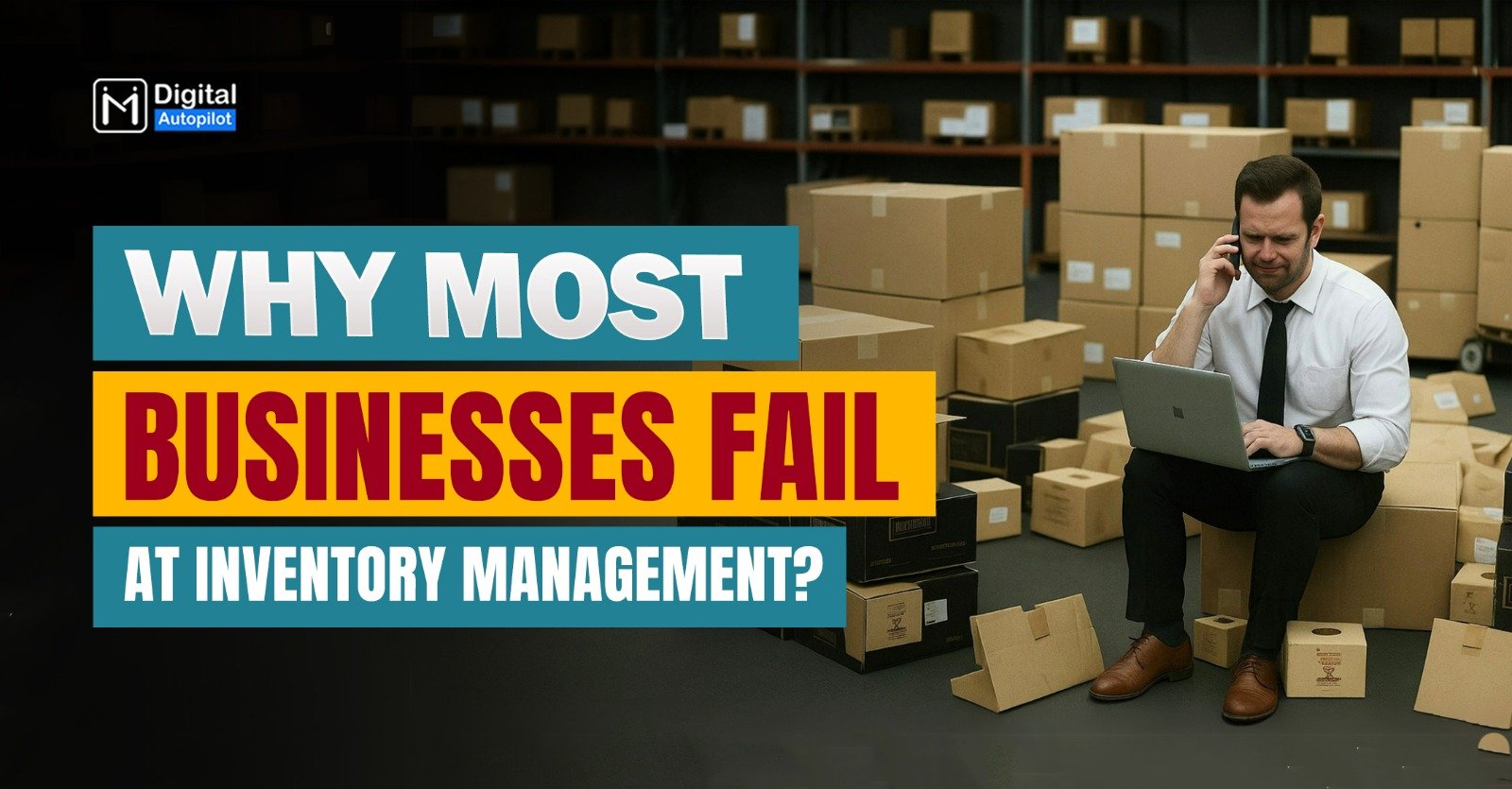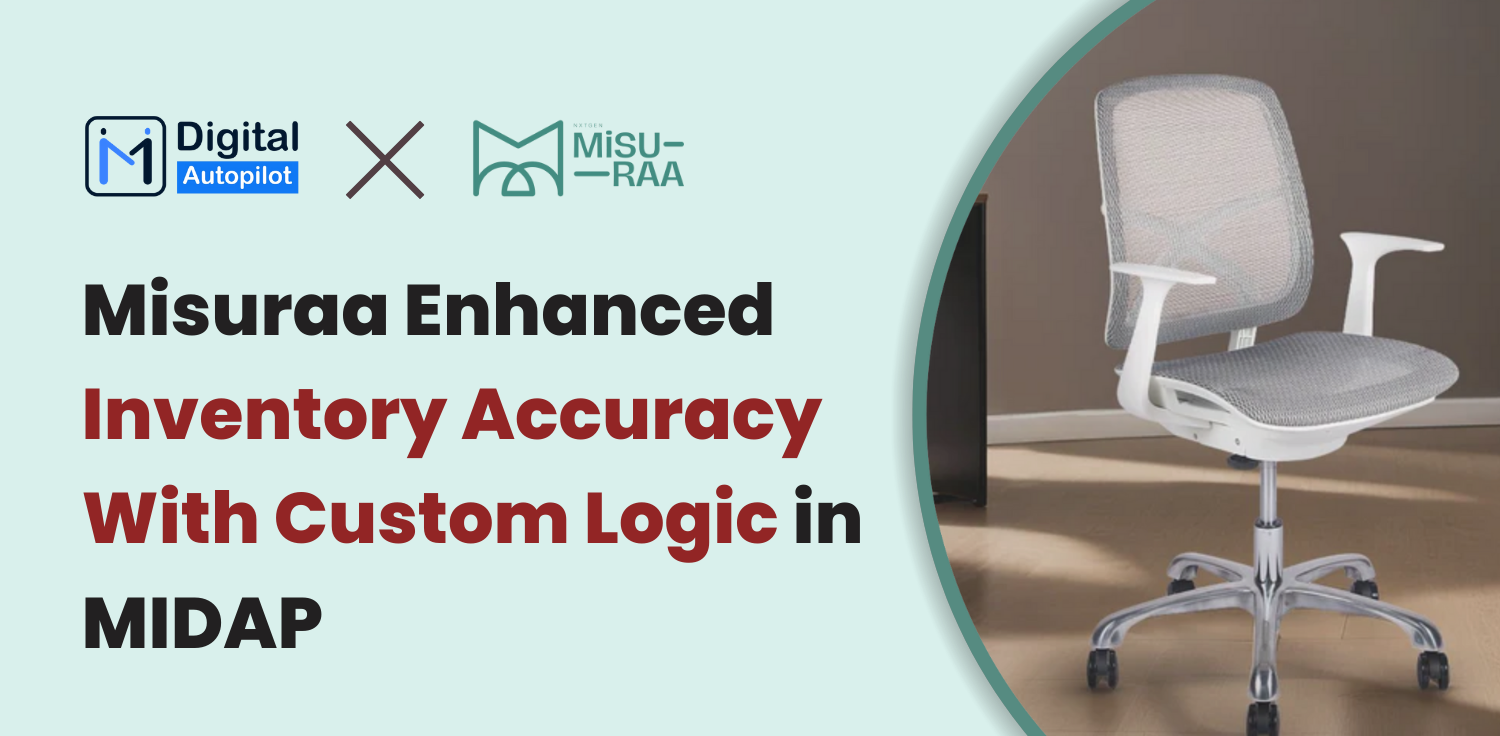Running a business is challenging but rewarding.
Statistics show that many businesses fail within the first few years, and the reasons are often the same: poor planning, inefficient processes, uncontrolled growth, and failure to adapt to market changes.
But what if there was a way to avoid these pitfalls?
What if you could make your business more efficient, reduce errors, and focus on growth?
In this blog, we’ll explore why businesses fail, share real-life examples, and explain how implementing a proper system can help you overcome these challenges.
Whether you’re a small business owner or managing a growing enterprise, this article can be the game-changer you need to succeed.
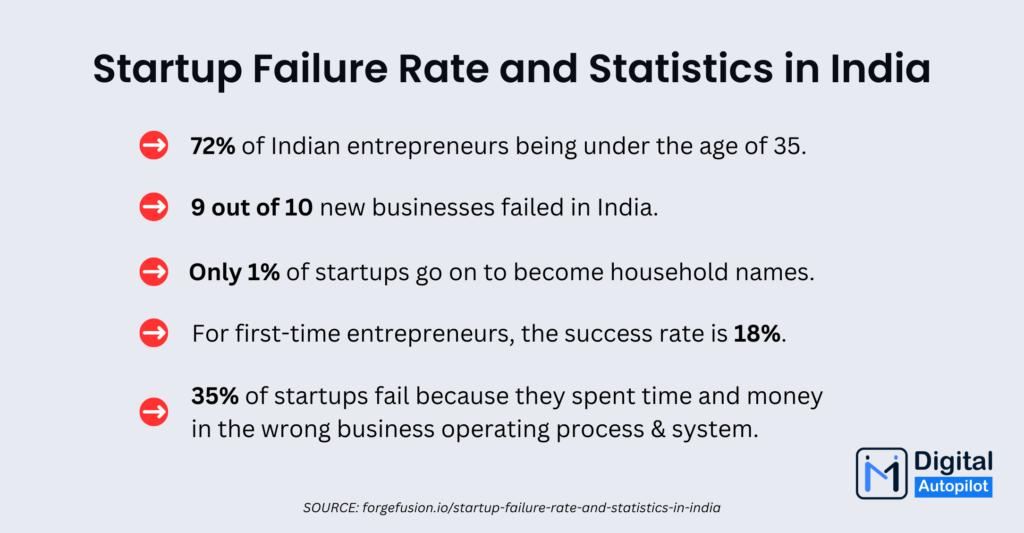
Top Reasons Why Businesses Fail in India
Let’s look at the common reasons why businesses fail, along with real-life examples:
1. Poor Planning and Lack of Strategy
Many businesses fail because they don’t have a clear plan.
Without a roadmap, it’s easy to lose direction, waste resources, and miss opportunities.
Real-Life Example:
Kingfisher Airlines, founded by Vijay Mallya, was once one of India’s most prominent airlines. Launched in 2005, it quickly gained popularity for its luxury services and premium customer experience. However, by 2012, the airline was grounded due to massive financial losses and debt.
What Went Wrong?
Poor Financial Planning: The airline failed to account for rising fuel prices and operational costs. It also took on significant debt to fund its expansion, which it couldn’t repay.
Lack of a Clear Strategy: Kingfisher Airlines didn’t have a sustainable business model. It focused heavily on luxury but failed to attract enough high-paying customers to cover its costs. At the same time, its low-cost segment couldn’t compete with established players like Indigo and SpiceJet.
Failure to Adapt: The airline didn’t adapt to the competitive Indian aviation market, which was dominated by cost-efficient carriers. It also failed to address operational inefficiencies and customer complaints.
The Result:
Kingfisher Airlines accumulated over ₹7,000 crores in debt and was forced to shut down in 2012. The company’s lack of planning, poor financial management, and failure to adapt to market conditions led to its downfall.
2. Inefficient Processes
Manual processes are time-consuming and prone to errors. Whether it’s managing inventory, handling customer orders, or tracking finances, inefficiencies can slow down your business and lead to costly mistakes.
Real-Life Example:
Videocon Industries, once a household name in India for consumer electronics and home appliances, faced a dramatic downfall due to inefficient processes and poor management. The company, which was founded in the 1980s, struggled to keep up with competitors and eventually filed for bankruptcy in 2018.
What Went Wrong?
Outdated Manufacturing Processes: Videocon relied on outdated manufacturing techniques and failed to modernize its production facilities. This led to higher production costs and lower-quality products compared to competitors like LG and Samsung, which invested heavily in automation and technology.
Inefficient Supply Chain Management: The company’s supply chain was poorly managed, leading to delays in product delivery and high inventory costs. Videocon often struggled to meet customer demand during peak seasons, resulting in lost sales and dissatisfied customers.
Lack of Automation: Videocon’s reliance on manual processes for inventory management, order processing, and financial reporting led to errors and inefficiencies. For example, the company often overstocked certain products while running out of others, leading to wasted resources and missed opportunities.
Failure to Adapt to Market Changes: Videocon failed to adapt to the rapidly changing consumer electronics market. While competitors embraced e-commerce and digital marketing, Videocon stuck to traditional retail channels and outdated marketing strategies.
The Result:
Videocon’s inefficient processes and inability to modernize its operations led to mounting losses. By 2018, the company had accumulated debts of over ₹45,000 crores and was forced to file for bankruptcy. Its failure serves as a stark reminder of how operational inefficiencies can bring down even well-established brands.
RECOMMENDED FOR YOU: 8 Tips to Save Time in Your Business Process
3. Uncontrolled Growth
Growing too fast can be just as dangerous as not growing at all. Businesses that expand without proper systems in place often struggle with cash flow, inventory management, and customer satisfaction.
Real-Life Example:
Jet Airways, once India’s premier full-service airline, is a classic example of uncontrolled growth leading to collapse. Founded in 1993, Jet Airways quickly became a market leader, known for its excellent service and extensive network. However, by 2019, the airline was grounded due to massive financial losses and debt.
What Went Wrong?
Rapid Expansion: Jet Airways expanded aggressively, both domestically and internationally. It acquired smaller airlines like Air Sahara and launched new routes to Europe, North America, and Southeast Asia. However, this expansion was not backed by a sustainable financial plan.
High Operational Costs: The airline’s rapid growth led to increased operational costs, including aircraft leasing, fuel, and staffing. Jet Airways struggled to manage these costs, especially during periods of rising fuel prices and economic downturns.
Debt Accumulation: To fund its expansion, Jet Airways took on significant debt. By 2019, the airline’s debt had ballooned to over ₹8,000 crores, making it impossible to sustain operations.
Failure to Adapt: Jet Airways failed to adapt to the changing aviation landscape. While low-cost carriers like Indigo and SpiceJet focused on cost efficiency and profitability, Jet Airways continued to prioritize luxury and full-service offerings, which were no longer sustainable in a price-sensitive market.
The Result:
Jet Airways suspended operations in April 2019, leaving thousands of employees jobless and passengers stranded. The airline’s uncontrolled growth, coupled with poor financial management, led to its downfall. Despite multiple attempts to revive the airline, Jet Airways has struggled to regain its former glory.
4. Lack of Adaptability
The market is constantly changing. Businesses that don’t keep up with these changes can struggle to stay relevant. They may lose customers if they don’t improve their products, services, or methods to match what people want. Over time, this can cause them to fall behind competitors or even fail.
Real-Life Example:
A well-known example of a lack of adaptability in India is Hindustan Motors’ Ambassador car. Once considered the epitome of luxury and reliability, the Ambassador dominated Indian roads for decades after its introduction in 1958. However, the company failed to adapt to changing market demands, consumer preferences, and technological advancements.
What Went Wrong?
Resistance to Innovation: While competitors introduced modern designs and advanced features, Hindustan Motors continued to rely on outdated technology and aesthetics.
Lack of Market Responsiveness: With the liberalization of the Indian economy in the 1990s, global car manufacturers like Maruti Suzuki, Hyundai, and Tata Motors entered the market with more fuel-efficient, stylish, and affordable cars. Hindustan Motors did not pivot quickly to meet the changing preferences of the growing middle class.
Inefficient Manufacturing: The company’s production processes were not optimized for cost efficiency, leading to higher prices and declining sales.
The Result:
Ultimately, Hindustan Motors ceased production of the Ambassador in 2014. This serves as a classic example of how a lack of adaptability to market trends and innovation can lead to the decline of even the most iconic brands.
5. High Operational Cost
Manual processes require more manpower, which increases operational costs.
For many businesses, these costs can quickly become unsustainable.
Real-Life Example:
A famous example of this issue is Dish TV, which faced significant challenges and near-collapse due to high operational costs, especially in its early years.
What Went Wrong?
High Operational Costs: Dish TV, as a direct-to-home (DTH) satellite television provider, had high infrastructure and distribution costs, including investments in satellite technology, set-top boxes, and service networks.
The cost of acquiring customers was high, as the company offered deep discounts on hardware (set-top boxes) to attract customers, impacting its profitability.
Price War: The DTH industry in India saw intense price competition, especially from new players like Tata Sky and Airtel Digital TV. This led Dish TV to continuously lower prices and offer discounts, eroding profit margins.
Regulatory Hurdles: The Indian government imposed regulations that impacted DTH service providers, including restrictions on channel pricing and mandatory subsidies for customers. These regulations increased operational complexity and added further pressure on profitability.
7 Life Lessons We Can Learn From Their Business Mistakes
Planning is Important – Without a clear plan, businesses can easily lose direction and fail.
Manage Money Wisely – Poor financial decisions and taking on too much debt can lead to collapse.
Avoid Outdated Methods – Many Companies struggle because they don’t update their processes and technology.
Grow at the Right Pace – Expanding too fast without a proper system can lead to financial trouble.
Keep Costs Under Control – High operational costs can quickly eat away profits.
Data Helps in Decision-Making – Businesses that track and analyze data can make better choices for growth.
Customer Experience Matters – Happy customers bring repeat business. Automation helps improve service and build trust.
How Automation Can Solve These Problems
Automation is not just a buzzword; it’s a powerful tool that can transform the way you run your business. Here’s how:
Streamlined Operations
Automation eliminates repetitive tasks, allowing your team to focus on more important work. For example, automating inventory management can help you track stock levels in real time, reducing the risk of overstocking or running out of products.
Improved Accuracy
Manual processes are prone to human error. Automation ensures that tasks are completed accurately and consistently, whether it’s processing orders, generating invoices, or managing payroll.
Better Decision-Making
Automation systems provide real-time data and analytics, giving you valuable insights into your business performance. With this information, you can make informed decisions and adjust your strategies as needed.
Scalability
As your business grows, automation can help you scale without increasing your workload. Automated systems can handle higher volumes of orders, customers, and data, ensuring that your business runs smoothly even during periods of rapid growth.
Cost Savings
By reducing the need for manual labor and minimizing errors, automation can significantly lower your operational costs. This is especially important for small businesses with limited budgets.
Enhanced Customer Experience
Automation can improve customer satisfaction by speeding up processes like order fulfillment, customer support, and feedback collection. Happy customers are more likely to return and recommend your business to others.
PEOPLE ALSO READ THIS: 10 Things You Should Know Before Investing in Business Automation Tool
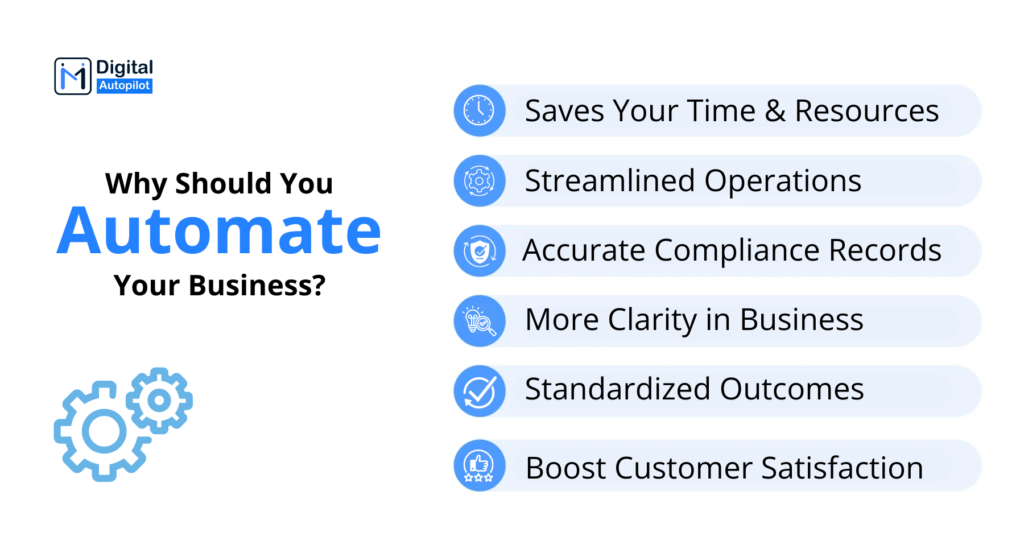
Some Real-Life Examples of Business Process Automation in Action
E-commerce Businesses: Automated inventory management systems ensure that products are always in stock, and orders are processed quickly.
Service-Based Businesses: Scheduling software automates appointment bookings, sends reminders, and manages cancellations, saving time and reducing no-shows.
Sales and Lead Management: Proper systems automate lead management, and follow-up reminders, helping sales teams stay organized and effective.
Corporate Sector: With the help of the right automation tool, you can automate task assignments, deadline reminders, and progress tracking to ensure teams stay aligned. Also, the Time-tracking system automatically generates reports detailing employee attendance, absences etc.
Conclusion
Many businesses in India fail because of poor planning, inefficient processes, rapid but uncontrolled growth, inability to adapt, and high costs. The stories of Kingfisher Airlines, Videocon, Jet Airways, Hindustan Motors, and Dish TV show that even big companies can struggle without proper systems.
The good news? These problems can be avoided! By using automation, businesses can work faster, reduce mistakes, cut costs, and make smarter decisions. In today’s competitive world, automation is not just helpful—it’s essential. With the right systems in place, business owners can build strong, successful companies that grow without constant struggles.
Looking to Automate Your System Workflow?
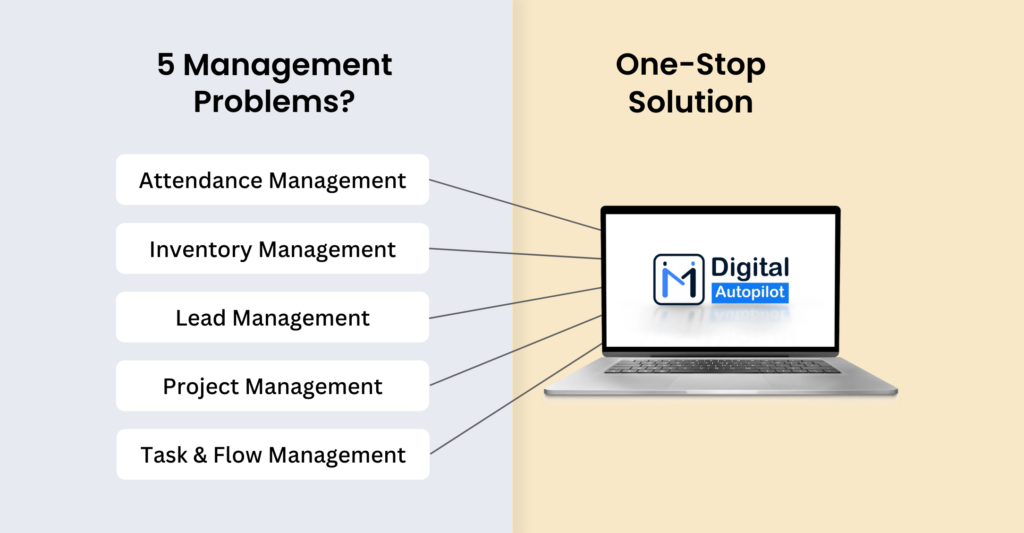
MI Digital Autopilot (MIDAP) is your one-stop solution to streamline operations, optimize workflows, and save time. MIDAP offers powerful automation features like Inventory Management, FMS, Task Assignment, Automated Scoring, Attendance Management, ChatBOT, and Drip Marketing to elevate your business. Contact our automation experts to learn more!






